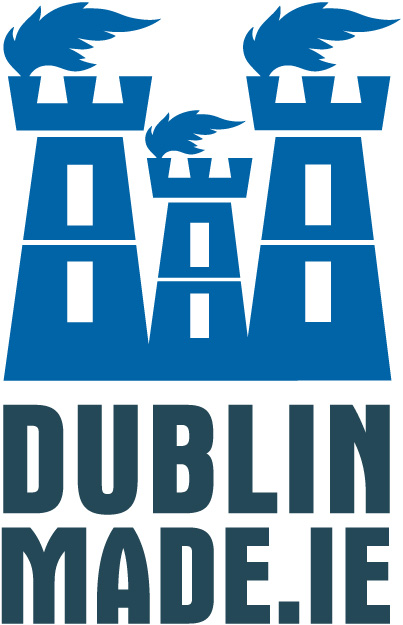
National Transport Museum – Scammell Townsman Mechanical Horse 1968 | Season 4 – Episode 78
Wheels Oct 15, 2024
Maximising efficiency for the delivery of parcels has always been a top priority for transport companies and this was the case when in 1932 the G.N.R (I) (Great Southern Railway Ireland) purchased a small fleet of Scammell Mechanical Horses.
SCAMMELL
In the 1930s, as smaller and more powerful engines emerged, vehicle designers began exploring the concept of a machine that could emulate the capabilities of a horse—one that was easy to manoeuvre in tight spaces, powerful, operated by a single driver, and reliable. And the idea of a “mechanical horse” was conceived. However, its inception faced a rocky start. The London and North-Eastern Railway initially approached D. Napier & Sons, the luxury car and aero-engine manufacturer, for ideas. Although Napier proposed some concepts, they opted not to pursue the development, ultimately selling the project to Scammell Lorries.
Over at Scammell, their designer, O.D. North, refined and advanced the idea of a three-wheel tractor unit and the Mechanical Horse was made a reality. Able to automatically couple and uncouple trailers, the Mechanical Horse was a robust and straightforward vehicle built on a steel channel frame, featuring a wooden cab with early models equipped with canvas doors.
Available in two sizes, it could carry loads of three tons or six tons. Powering these vehicles were Scammell’s own side valve petrol engines: a 1125cc engine for the 3-ton model and a 2043cc engine for the 6-ton variant, both offset to the left of the cab.
Renowned for their manoeuvrability, these vehicles could execute a 360-degree turn within just 19 feet while towing a 16-foot trailer. They had a road speed of approximately 20 mph and achieved fuel efficiency ranging from 10 to 20 mpg.
After World War II, Scammell Lorries revamped the Mechanical Horse, retaining the automatic coupling but completely redesigning the tractor. The frame was lowered, with the engine, gearbox, and rear axle integrated behind the cab. A 2090cc side valve petrol engine powered both the 3-ton and 6-ton models, later offering Perkins diesel engines. The radiator was placed behind the driver, and the Scarab’s low engine position improved stability. The new, rounded all-steel cab also made the vehicle more comfortable for drivers.
C.I.É. ESTABLISHED
On January 1st, 1945, Córas Iompair Éireann (C.I.É.) was established under the Transport Act of 1944, merging the Great Southern Railways (GSR) and the Dublin United Tramway Company (DUTC). As part of this unification, the small fleet of Scammell Mechanical Horses operated by the G.N.R. was transferred to C.I.É.
By the mid-1960s a significant number of Scammell Scarab mechanical horses were operating in Ireland, with McCairns Motors of Santry, Dublin, serving as the Irish agent. In addition to C.I.E., British Railways, and the B&I Line, many factories employed these vehicles for shunting tasks.
In 1964, C.I.É. expanded and upgraded its fleet of Scammell mechanical horses, introducing the Townsman model, which quickly became a familiar sight in Irish cities. To meet productivity targets, C.I.É. deployed three trailers for each tractor: one for loading, one for unloading at either end of a route, and a third in transit between the two points. By 1968, C.I.É. Scammell’s had completely replaced its horse-drawn delivery fleet.
We previously covered the story of the withdrawal of the C.I.É. horse-drawn delivery fleet – https://www.youtube.com/watch?v=-pytCR52wnc&t=14s
OLD HABITS
While chatting with Peter, a volunteer at the National Transport Museum, he shared a story illustrating how old habits die hard. He recounted a C.I.É. driver who continued to converse with his Townsman tractor in encouraging tones, much like he had done with a series of horses over the past 25 years.
SCAMMELL TOWNSMAN S137
The Scammell S137 (Registration: MZL 723) was one of the last Townsman tractors to enter service, doing so on March 2, 1968, and it operated until 1981. The decline of these versatile vehicles was accelerated by changing transport patterns and new braking regulations. The third generation of the Scammell Townsman fleet was withdrawn from service in 1981 due to non-compliance with updated braking standards.
On withdrawal, S137 was repainted at Broadstone Garage, Dublin and came to the National Transport Museum collection with shutter-sided semi-trailer box van ST398.
NATIONAL TRANSPORT MUSEUM
In the 1940s The Transport Museum Society of Ireland began to collect vehicles. Their collection was given a permanent home from 1974 at Castleruddery, County Wicklow and renamed as the National Transport Museum. Since 1985 the museum has been in the Heritage Depot, Howth Demesne, in former farm buildings, which are accessed via the main gates for Howth Castle.
Their collection showcases an array of vehicles, including buses, lorries, trucks, fire engines, trams, and tractors. Sixty vehicles, dating from the late 19th century to 1984, are currently on display in Howth, with over 180 in total. The remaining vehicles are stored at a reserve depot in Castleruddery/ Donoughmore, in County Wicklow.
The National Transport Museum boasts a collection sure to spark your interest. Dedicated to preserving Ireland’s transport heritage, the museum operates entirely on a voluntary basis, with funding from entry fees, poster sales, and donations.
Your support helps keep Irish transport history alive—plan your visit this weekend and explore!
Sources of Information and Credits:
Lewi Buch Productions
The Classic Vehicle Channel
The Mechanical Horse Club
If you have a story to share, email Kevin Reid [email protected]

